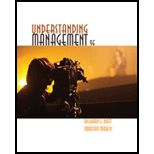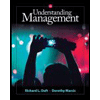
Concept explainers
Case summary/Introduction:
The founder of Company M S is RS. He came across the idea to start the business after the remarks given to him by a client on building a good work shelter, as his expertise was at architecture.Following this, he came across the idea of starting his panel dwellings business. M S is built to adapt and suit the needs of the market, and so, it thrives in the industry. However, it faces rivalries with large builders.
For RS, partnering with external specialists to carry out their operational activities was considered the most effective and efficient decision, as it was just a start-up company. One such specialist is S P, who is a marketing consultant. Accordingly, company's dealer network is also expanding in magnitudes. The known qualities of the company are that it is small, flexible and responsive. This allowed them to thrive in an economic recession.
Characters in the case:
R S, S P.
Adequate information:
S P considers himself as an important part of M S's success, even though he doesn't expect to become its employee. What impresses P is the ability of company M S to respond quickly to the needs of the market.
To determine:
The way in which RS determined whether his company required a mechanistic structure with a formal hierarchy or organic including free-flowing
Want to see the full answer?
Check out a sample textbook solution
Chapter 7 Solutions
Understanding Management
- This week, we learned about three seminal research studies that assess culture’s effects on management; Project GLOBE Cultural Dimensions; Hofstede’s Value Dimensions; and Trompenaars’s Value Dimensions. For this discussion use the philipines and research Hofstede’s findings regarding the four dimensions: power distance, uncertainty avoidance, masculinity, and individualism.arrow_forwardThis week’s assignment revisits the strategic initiative proposed in the Module 2 Critical Thinking assignment. What are the organization’s key processes? Given your strategic initiative, what processes must be done exceptionally well for the strategic initiative to succeed? Given these key processes, what metrics should be used to monitor the execution of these processes? (Key performance indicators typically include measures of customer satisfaction, internal process quality, employee satisfaction, and financial performance.) Monitoring processes and KPIs are part of the control process to achieve goals related to quality and efficiency. Policy creation also supports achieving goals and communicating expectations. For this assignment describe the organization. Then diagram and describe the organization’s value chain. Given the strategic initiative, identify key performance indicators (KPIs) per critical value chain section, explain how the KPI would be measured, describe or…arrow_forwardComment on how Dell can optimise transportation and logistics systems to develop a sustainable port system that reducesarrow_forward
- Helparrow_forwardHow can diversity contribute to competitiveness and conflict at the same timearrow_forwardBusiness Process Reengineering One of the world’s most successful sports apparel companies is Nike, Inc. (Nike, n.d.). Nike re-engineered its value chain by keeping high-value knowledge-intensive activities in the US such as design and marketing and using overseas manufacturing to produce its shoes and clothing. However, instead of engaging foreign direct investment to build and operate its clothing manufacturing facilities, Nike further re-engineered its value chain by relying on third-party contractors to produce Nike products. Thus, Nike’s owned activities are streamlined allowing Nike to consistently earn high returns. Business process reengineering is a collection of processes to improve business performance by changing, dropping, or reordering the processes by which tasks are accomplished. Please conduct some research or share an example that you witnessed of either successful or unsuccessful business process reengineering. Explain why the reengineering was successful or…arrow_forward
- Pick a country, organiztion and product and explain this: Country Background: Provide a brief overview of the country you have chosen and why you think it will be a good location for the organization to manufacture the proposed product. Corporate Social Responsibility (CSR): You have noted the organization is making inroads with sustainability efforts in the US and you know this needs to be carried out in the expansion as well. Describe any CSR efforts your expansion will take on in the expansion country with explanations connecting this decision with expected benefits from this action. Corporate Ethics: Discuss any ethical issues you anticipate with either company operations or country behavior and how you would mitigate these issues.arrow_forwardFor the UK "University of wales trinity saint david" university as company as extended brand, follow the image as ques with a detailed as explanation , vast explanation.arrow_forwardI need more thousand word details as For the UK "University of wales trinity saint david" university as company as brand, follow the image with a detailed, vast explanation.arrow_forward
- Assume you are a member of the ethics committee. Define the problem. What is the ethical question. Provide a summary of the case. What is your gut reaction to the case. What is your first reaction.arrow_forwardFor the UK "University of wales trinity saint david" university as company as brand, follow the image with a detailed, vast explanation.arrow_forwardFor each of the five sentences below, there may be error in punctuation, grammar or spelling. Select the option that best describes the type of error seen. If the sentence is correct as it stands, select No error. Error in punctuation Error in grammar Error in spelling No error 1 The relationship that matters most in the life of a -------- is the one between him and his constituency. Select one: a. captain b. politician c. manager d. judge All of these sweaters are extremely --------- by the local residents of a small Scottish island. Select one: a. well-knit b. well-founded c. well-worn d. well- made The government was warned ---------- indulge in too much borrowing this year. Select one: a. not to b. to not c. never d. do not 4 I do not believe that this preposterous scheme is ---------- of our serious consideration. Select one: a. Worthless b. worth c. worthwhile d. worthy You are being thoroughly --------- in refusing to allow this ceremony to take place. Select one: a.…arrow_forward
 Understanding Management (MindTap Course List)ManagementISBN:9781305502215Author:Richard L. Daft, Dorothy MarcicPublisher:Cengage Learning
Understanding Management (MindTap Course List)ManagementISBN:9781305502215Author:Richard L. Daft, Dorothy MarcicPublisher:Cengage Learning Management, Loose-Leaf VersionManagementISBN:9781305969308Author:Richard L. DaftPublisher:South-Western College Pub
Management, Loose-Leaf VersionManagementISBN:9781305969308Author:Richard L. DaftPublisher:South-Western College Pub


